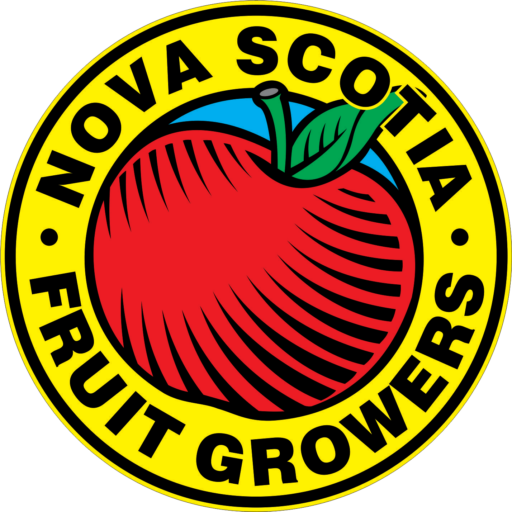Pruning & Training Apple Trees
by The Atlantic Committee on Fruit Crops
Pruning and tree training are two of the more powerful horticultural techniques at the grower’s disposal. These techniques can help to prevent or overcome many of the problems in the mature orchard. However, they can also be the cause of problems. A good understanding of the training system, just what pruning can do and of what limitations are imposed by the nature of the tree is therefore important if one is to obtain the desired production and fruit quality from the orchard.
There are many styles and methods of pruning. This can be bewildering to even experienced growers. However, there is no confusion if you remember that there is no one best way to prune. In each case, the choice will depend upon the starting conditions and what the objectives are.
Training refers to the development of the structural framework of the trees. While some training may be necessary after the tree comes into production, this activity is largely confined to the non-bearing early years. The objective of the training is to develop a framework that effectively displays a large surface area of the tree canopy to full sunlight and will support heavy crop loads. Pruning is part of the training program.
For more information on pruning and training apple trees including:
When to prune
Principles of pruning
Light interception and tree form
Training systems
Special techniques
Pruning term glossary
Download article at Pruning & Training Apple Trees or contact the NSFGA office.
Restoring Old Neglected Apple Trees
by Chris Duyvelshoff, Horticulturist, Perennia
Old apple trees are commonly found on farms and rural properties throughout Nova Scotia. Typically, these trees have been neglected for several years and are dense, vigorous beasts that produce poor quality fruit with erratic regularity. These trees are often very biennial; producing a large crop in one year followed by very few fruit, or none at all, in the following season.
One of the common questions regarding old apple trees is how to prune them to bring them back into production and improve fruit quality. It is possible to restore most old apple trees into a management state.
First, you should ask yourself if the tree really is worth saving. Is the fruit particularly unique or did it have exceptional taste or texture? Is the tree in an appropriate location on the property? Are there many diseases (i.e. cankers) on the branches and on the trunk? You may be better off removing the old tree and planting a new tree.
However, for many people, the old tree is unique, special, sentimental, and you want to preserve it. To begin, there is one rule and four main steps to restoring an old apple tree.
The golden rule is to remove no more than a quarter to a third of the entire canopy in a single year. Removing more than this will stress the tree; however, by limiting pruning to a quarter to a third of the canopy, over a period of 3-4 years, you will begin to restore the balance between vegetative growth and fruiting.
Keeping the golden rule in mind, these are the four main steps to consider:
Step 1: Remove any dead, broken, weak, or diseased branches. These can be completely removed without counting as part of the golden rule.
Step 2: Begin to remove completely vertical “sucker” shoots as these shoots are almost exclusively vegetative and shade the lower branches in the canopy.
Step 3: Remove branches that are difficult to reach, cross each other closely, rub together, overlap, or heavily shade the remaining branches below.
Step 4: Begin the process of selectively renewing the productive bearing branches of the tree with the goal of improving light penetration into the canopy. Light interception into the canopy increases flower bud production, flowering, and the production of high quality fruit. This point cannot be stressed enough.
Finally, do not immediately fertilize the tree after pruning—especially with nitrogen. Established trees have a large enough root system that they are capable of acquiring most of their nutritional requirements during the restoration process from the soil. Fertilization can be considered as the tree balance is restored over time.
For more information, download the article at Restoring old neglected apple trees.
